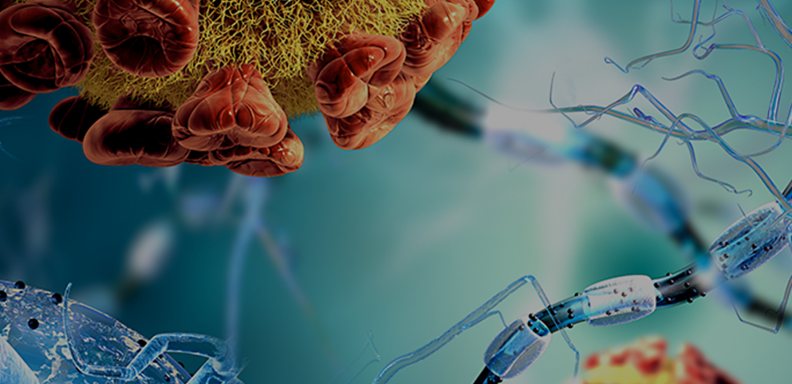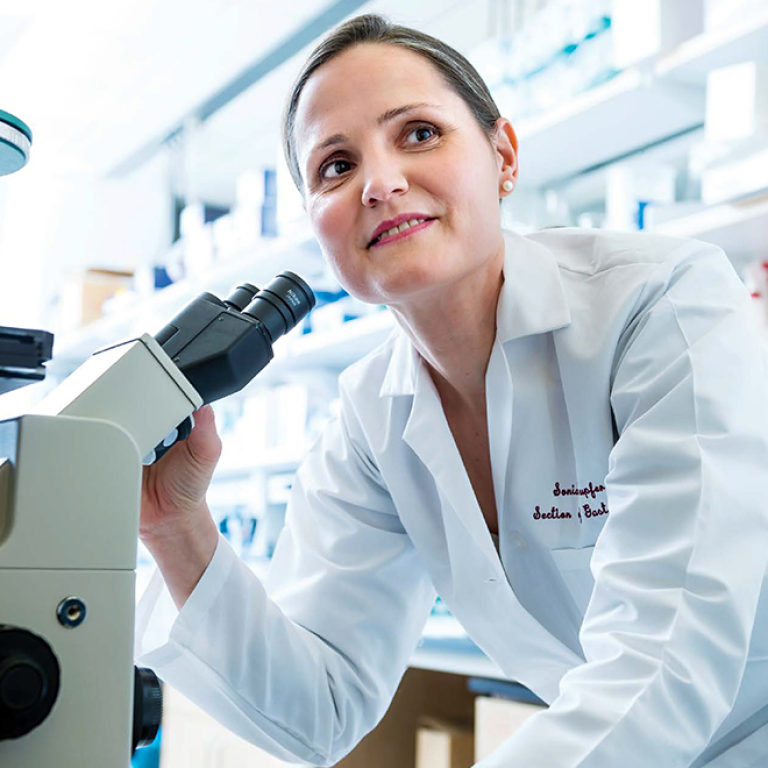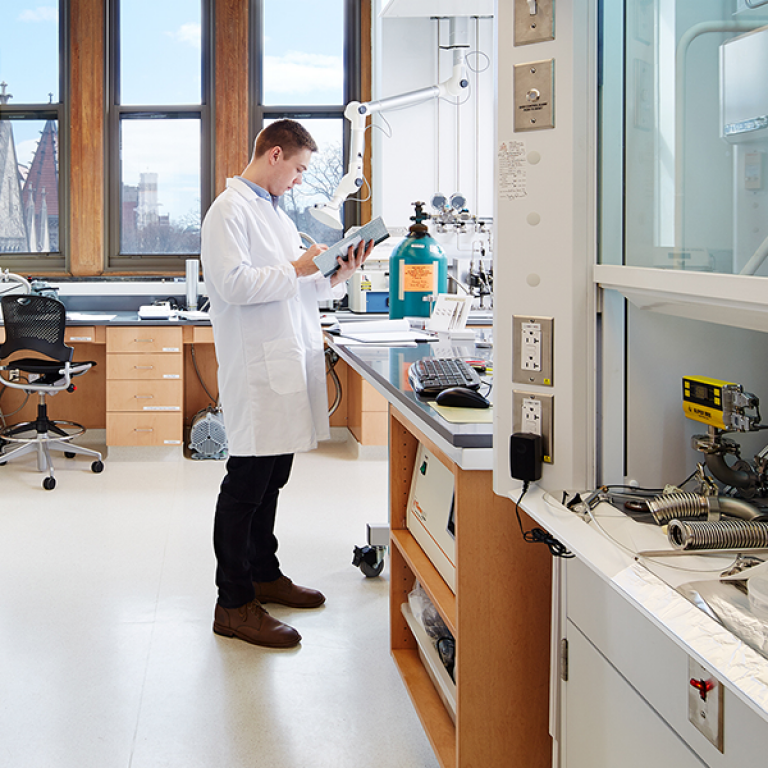Nadia Biassou, MD’00, PhD, grew up among a concert of languages. Her Haitian parents emigrated to Canada in the 1950s after the rise of autocrat François Duvalier, later settling in New York.
At home, “French was the lingua franca,” said Biassou, who also is fluent in Haitian Creole. “But if I did something wrong, my mother spoke in English. That’s how I knew I really screwed up.”
Biassou’s plans to major in neuroscience seemed natural: Her father was an anesthesiologist and her mother was a nurse. But she also loved literature.
This story appeared in Medicine on the Midway magazine. Read the Fall 2024 issue here.
As a junior at Amherst College, Biassou took a course on the neuropsychology of language processing, and her interests merged. “I had been around so many different languages, but I never thought about language in a scientific way — how the brain generates it, what happens to language when a brain is injured,” she said.
It led Biassou on a global journey, including a stop at the Pritzker School of Medicine, that led to her latest success: a new research unit at the National Institutes of Health focused on developing AI-assisted models to predict functional recovery after brain injury.
Writing her own story
After earning an undergraduate degree in English literature, Biassou set aside plans for medical school. She cold-called the NIH and asked how to get an internship in language research.
To her surprise, a woman returned her query. Biassou eventually landed an internship in Boston studying reading comprehension in patients with Alzheimer’s disease. After that, she went to France, helping researchers study how language structure was impacted in stroke patients.
Biassou then pursued a PhD in linguistics at the University of Pennsylvania, where her work using neural imaging to understand language led her to once again consider medical school.
At first, many administrators couldn’t see her vision. It wasn’t until an interview at Pritzker that former dean of students Norma Wagoner, PhD, became the first person to ask Biassou a simple question: “Why did you pursue this path?”
“I told her I wanted to use cognitive scientific theory as the basis for treatment plans for people with communication disorders,” Biassou said. “Language is the crux of what makes us human.”
After completing her internship in internal medicine and a residency and fellowship in radiology, Biassou sought career advice from Wagoner, who suggested the NIH — a place where her skill sets could merge. Biassou was hired there as a clinical neuroradiologist in 2006.
Words of wisdom
Biassou, who also holds academic positions as Clinical Professor of Radiology at the George Washington University and Georgetown University School of Medicine, recently collaborated with colleagues to develop a curriculum for a new radiology technician school in Haiti — a project in honor of her father, who died in 2007.
Another milestone came in 2022 with the creation of the Integrative Neuroscience of Communication Unit within the National Institute on Deafness and Other Communication Disorders.
The NIH lab, Biassou said, “is really a culmination of my life’s journey.”
As chief, she leads a team of scientists and trainees who use brain imaging techniques, computational neuroscience and linguistics to better understand the basis of language comprehension — as well as computational models and simulations to learn how planned medical treatments, such as surgery, might affect patients.
In quieter moments, Biassou still hears the words of her younger self. “I tell students who I mentor that even if you have to take long detours like I did, you need to listen to that voice,” she said.



